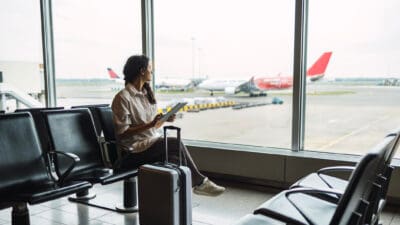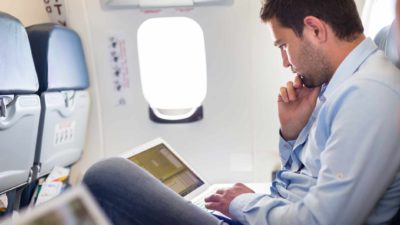The Qantas Airways Limited (ASX: QAN) share price will be one to watch on Thursday.
This follows the release of a market update which revealed that the first half of FY 2022 has been incredibly tough.
What did Qantas announce?
This morning Qantas revealed that it has been able to accelerate the repair of its balance sheet and expects to finish the first half of FY 2022 with a materially better net debt position than it had prior to the start of Delta variant lockdowns in June.
According to the release, this has been driven by strong sales once international and domestic border reopenings were announced, continued strength from the Qantas Freight and Qantas Loyalty businesses, and the $802 million sale of land in Mascot that was not core to the company's long-term strategy.
This helped to partly offset difficult trading conditions for most of the first half due to lengthy lockdowns in Melbourne and Sydney, which were compounded by border closures in other states that brought domestic flying down to a low of ~30% of pre-COVID levels at times.
Based on the above, Qantas expects its net debt to be $5.65 billion at the end of the first half. Positively, the airline's liquidity remains strong, with cash of $2.6 billion and undrawn debt facilities of $1.6 billion.
Qantas share price on watch amid $1.1 billion+ first half loss
Unfortunately, the above will not be enough to make the company profitable. In fact, management warned that it "anticipates a significant loss in the first half" because of months of lockdowns.
The release advises that, assuming no further lockdowns or significant travel restrictions, Qantas expects to record an underlying earnings before interest, tax, depreciation and amortisation (EBITDA) loss in the range of $250 million to $300 million for the first half.
However, once non-cash depreciation and amortisation costs are added into the mix, Qantas expects to record an underlying earnings before interest and tax (EBIT) loss exceeding $1.1 billion.
Management also advised that it expects to incur additional ramp-up costs in the second half of FY 2022. This reflects all Australian-based employees returning to work earlier than expected and ahead of demand. This is to ensure capability is maintained and to end a long period of stand down for employees.
"One of the worst halves of the pandemic"
Qantas' CEO, Alan Joyce, commented: "This has been one of the worst halves of the entire pandemic, where most states had their borders closed and the majority of Australians were in lockdown. Domestically, our capacity fell to around 30 per cent of preCOVID levels for several months."
Positively, Mr Joyce remains positive on the future, particularly given the structural changes the company made during the pandemic.
He explained: "Fortunately, the structural changes we made earlier in the pandemic put us in a good position to weather these extremely poor trading conditions while the national vaccination rate reached a point where states started to open back up."
"Australia now has one of the highest levels of vaccination and it's still rising. That sets us apart from many other countries and puts us in a much better position to manage uncertainty around variants and seasonal surges."
And while the Omicron variant has hit traveller confidence, Mr Joyce notes that the intent to travel overseas remains robust and the domestic business is recovering strongly.
"The news of the Omicron variant had a clear impact on people's confidence to book international trips in particular, but we haven't seen large numbers of cancellations. Many customers have strong intentions to travel if the border and quarantine settings are right and in the past few days we have seen intakes improve. Domestic demand has started to pick up again and we're expecting a strong performance over the Christmas period and continued strength into early next year as more restrictions ease," concluded Mr Joyce.
Airbus orders
Finally, in other news, Qantas revealed that it has signed an in-principle agreement with Airbus for up to 134 orders and purchase right options over 10+ years with deliveries from FY 2024 onwards.
Once finalised, this will represent the largest aircraft order in Australian aviation history. Financial details of the deal are commercial in confidence but represent a material discount from list prices.








